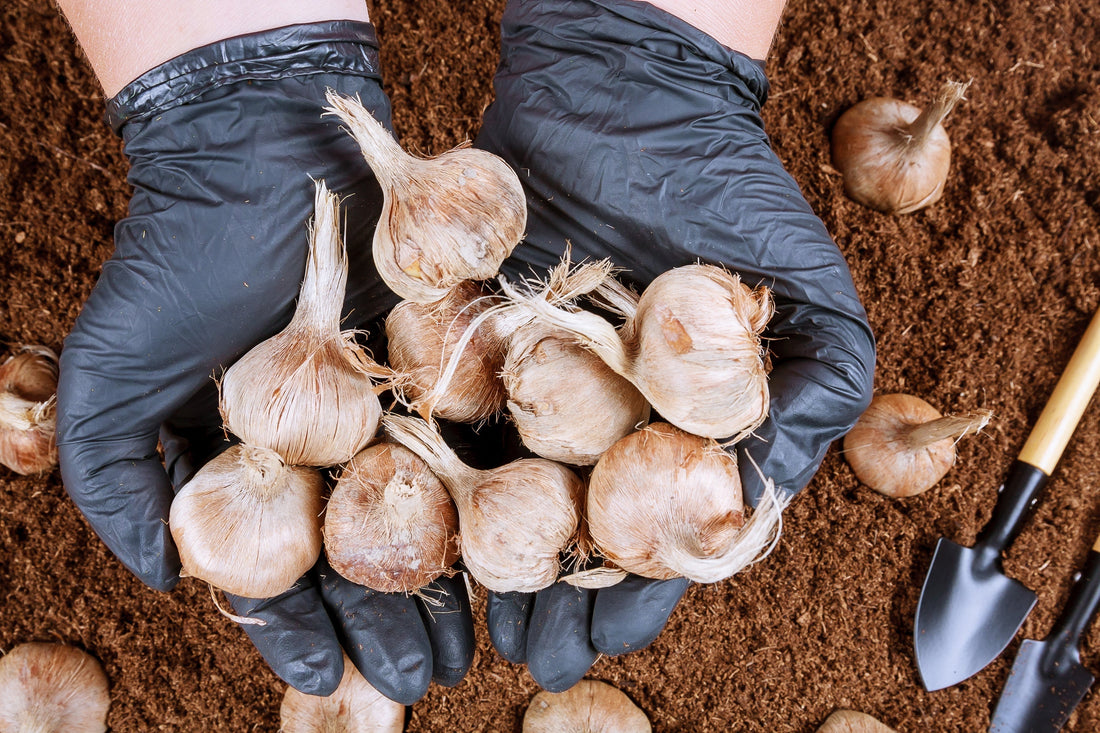
How to plant your saffron bulbs?
Share
Saffron, known as the “Red Gold,” is a prized spice derived from the Crocus sativus flower. Growing your own saffron can be a rewarding experience, offering fresh, aromatic threads straight from your garden. To ensure a successful harvest, follow these essential steps to plant and care for your saffron bulbs properly.
1. Choose the right location
Saffron thrives in well-drained soil and a sunny location. Select a planting site that receives at least 6-8 hours of direct sunlight daily. Avoid areas with heavy clay soil, as excess moisture can cause bulbs to rot.
Tip: If your soil is heavy, consider raised beds or amend the soil with sand and compost to improve drainage.
2. Prepare the soil
Before planting, prepare the soil by loosening it to a depth of 30 cm (12 inches). Mix in organic compost or well-rotted manure to enrich the soil. The ideal pH level for saffron cultivation is between 6.0 and 8.0.
Tip: Avoid nitrogen-rich fertilizers, as excessive nitrogen can promote leaf growth at the expense of flowers.
3. Planting depth and spacing
To achieve optimal growth, follow these planting guidelines:
- Depth: Plant bulbs at a depth of 10-15 cm (4-6 inches).
- Spacing: Keep bulbs 10-15 cm (4-6 inches) apart to allow room for root expansion and airflow.
- Orientation: Place the bulbs with the pointed tip facing upward.
Tip: Plant bulbs in a staggered pattern or rows to maximize space efficiency.
4. Watering needs
Saffron bulbs require minimal watering. Water lightly after planting to help the bulbs establish. After that, only water if the soil becomes excessively dry. Overwatering can lead to fungal diseases and bulb rot.
Tip: Use well-draining soil and avoid watering during the dormant summer period.
Read more about watering your saffron bulbs.
5. Mulching for protection
Applying a layer of mulch (such as straw or pine needles) can help regulate soil temperature and moisture. This is particularly beneficial in colder regions where saffron bulbs need protection from frost.
Tip: Avoid heavy mulching, as too much moisture retention can harm the bulbs.
6. Caring for saffron bulbs
Weeding: Keep the planting area free from weeds, which can compete for nutrients and space.
Pest Control: Saffron bulbs are relatively pest-resistant, but keep an eye out for rodents that might dig up bulbs.
Seasonal Care: Saffron blooms in autumn. Once flowering is complete, allow the foliage to wither naturally, as this helps the bulbs store energy for the next season.
Tip: Avoid cutting the leaves before they dry out completely, as this can weaken the bulbs.
7. Harvesting your saffron
Saffron flowers bloom for a short period, typically in October to November. Harvesting should be done early in the morning when the flowers are fully open. Gently pluck the three red stigmas from each flower and dry them in a well-ventilated area.
Tip: Store dried saffron threads in an airtight container away from light and moisture to preserve their flavor and potency.
Conclusion
Growing saffron at home is a fulfilling process that requires patience and care. By providing the right soil conditions, proper spacing, and minimal watering, you can enjoy a bountiful saffron harvest. Follow these steps, and soon you’ll be harvesting your own high-quality saffron, perfect for culinary and medicinal use!
Have any questions or tips from your saffron-growing experience? Share them in the comments below!

1 comment
Would like to be a licensed seller of saffron crocus plants